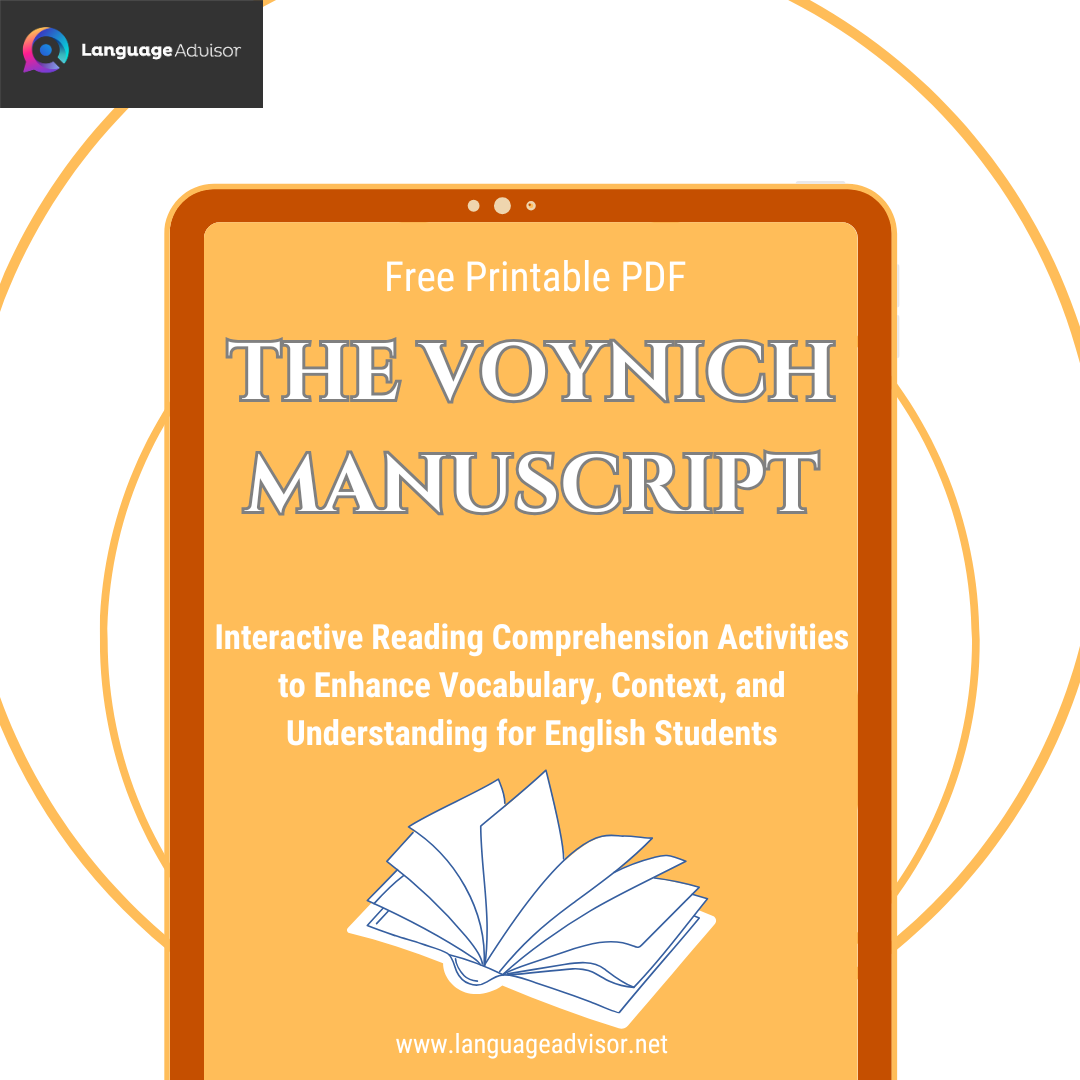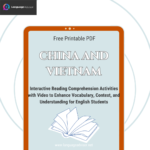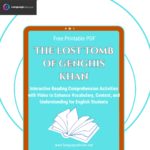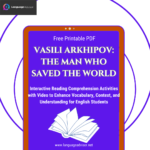The Voynich manuscript. Reading Comprehension Activities to Enhance Vocabulary, Context, and Understanding for English Students. Free Printable PDF
The Voynich manuscript

Improving reading comprehension is a vital skill for English learners at all levels. It goes beyond just understanding the words on the page, but also involves grasping meaning, context, and intent behind a text. In this blog post, we’ll explore a fun and interactive reading comprehension activity that combines written passages to deepen understanding and make learning more enjoyable.

The Voynich manuscript – Reading Comprehension
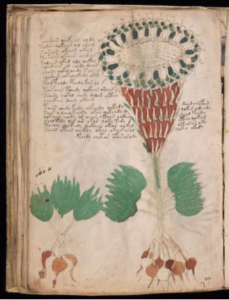
Voynich manuscript, illustrated manuscript written in an unknown language and thought to have been created in the 15th or 16th century. It is named after antiquarian bookseller Wilfrid Voynich, who purchased it in 1912. Scholars and scientists have sought to decipher the text since the manuscript was first discovered. Since 1969 it has been housed in the Beinecke Rare Book and Manuscript Library at Yale University.
Vocabulary
manuscript – noun the form of a literary work submitted for publication; handwritten book or document
illustrate – verb supply with illustrations; depict with an illustration; clarify by giving an example of
antiquarian – adj. of or relating to antiques or antiquities; of or relating to persons who study or deal in antiques or antiquities; noun an expert or collector of antiquities
decipher – verb read with difficulty; convert code into ordinary language
discover – verb make a discovery; make a discovery, make a new finding; see for the first time; make a discovery; get to know or become aware of, usually accidentally; identify as in botany or biology, for example; make known to the public information that was previously known only to a few people or that was meant to be kept a secret; discover or determine the existence, presence, or fact of; find unexpectedly

Questions
Multiple Choice
When was the Voynich manuscript likely created?
- A) 14th century
- B) 15th or 16th century
- C) 17th century
- D) 18th century
Who purchased the Voynich manuscript in 1912?
- A) A librarian at Yale University
- B) An unknown scholar
- C) Wilfrid Voynich
- D) A government official
What is the primary challenge faced by scholars studying the Voynich manuscript?
- A) The age of the manuscript
- B) The illustrations contained within
- C) The unknown language and writing system
- D) The physical condition of the manuscript
What kind of illustrations does the Voynich manuscript contain?
- A) Historical events
- B) Botanical drawings and astronomical diagrams
- C) Maps of ancient cities
- D) Portraits of famous figures
Short Answer
Where has the Voynich manuscript been housed since 1969?
What does the term “decipher” mean in the context of the Voynich manuscript?
Vocabulary Context
- Using the vocabulary provided, explain the significance of the term “antiquarian” as it relates to Wilfrid Voynich and the manuscript.
Answer Key
Multiple Choice Answers
- B
- C
- C
- B
Short Answer Responses
- The Voynich manuscript has been housed in the Beinecke Rare Book and Manuscript Library at Yale University since 1969.
- In the context of the Voynich manuscript, “decipher” means to read and understand the text, which is challenging due to its unknown language and writing system.
Vocabulary Context Answer
- The term “antiquarian” relates to Wilfrid Voynich as he was an expert in antiques and antiquities. His background in antiquarianism likely contributed to his interest in purchasing and studying the Voynich manuscript, as it is a rare and ancient artifact.

DOWNLOAD THE PDF FOR FREE


